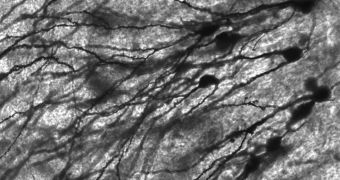For decades, experts have known that the human brain contains a set of nerve cells that were part of a so-called mirror neuron system. This structure has recently been demonstrated to work on a larger variety of things than initially thought, including on robots.
Many people have found themselves feeling sympathetic for Wall-E and EVA during their romance in the Pixar animated movie. If the mirror neuron system had worked like experts believed until now it did, then none should have felt this understanding of what the robot was going through.
Our past understanding of how the brain worked was that mirror neurons were activated when people saw others performing actions that they too could perform. But this view was rendered obsolete in the new investigation.
Researchers demonstrated that the mirror neuron system is activated even when humans see actions that they themselves cannot replicate. The major implication of this is that we can feel empathy for inanimate objects such as robots, if they are presented in a way that elicits it from us.
“There are a lot of situations where you see actions that you can’t do with your own body,” explains Radboud University Nijmegen expert Emily Cross, the coauthor of the new study.
“If you think about watching a gymnast at the Olympics, watching a break dancer, or even watching Star Wars or Wall-E, we see all sorts of actions and agents that we can’t readily map onto our own motor systems,” she goes on to say.
Details of the new study were presented at the annual meeting of the Cognitive Neuroscience Society (CNS 2011), on April 2, The conference was held in San Francisco, California, Science News reports.
For the research, Cross and her team used functional Magnetic Resonance Imaging (fMRI) to look at the brains of 22 test subjects, as they were watching either a man performing a fluid dance, or one performing robot-like motions.
Experts were surprised to learn that parts of the mirror neuron system activated with higher intensity in people who were watching the robot-like motions than in those who were watching the fluid gestures.
Parts of the parietal lobe and the premotor cortex exhibited the most intense activation patterns. University of Southern California (USC) in Los Angeles neuroscientist Lisa Aziz-Zadeh says that the findings to make sense.
It could also be “that the mirror system is not just modulated by expertise, but also perhaps by attention, novelty, and other factors,” she explains.

 14 DAY TRIAL //
14 DAY TRIAL //